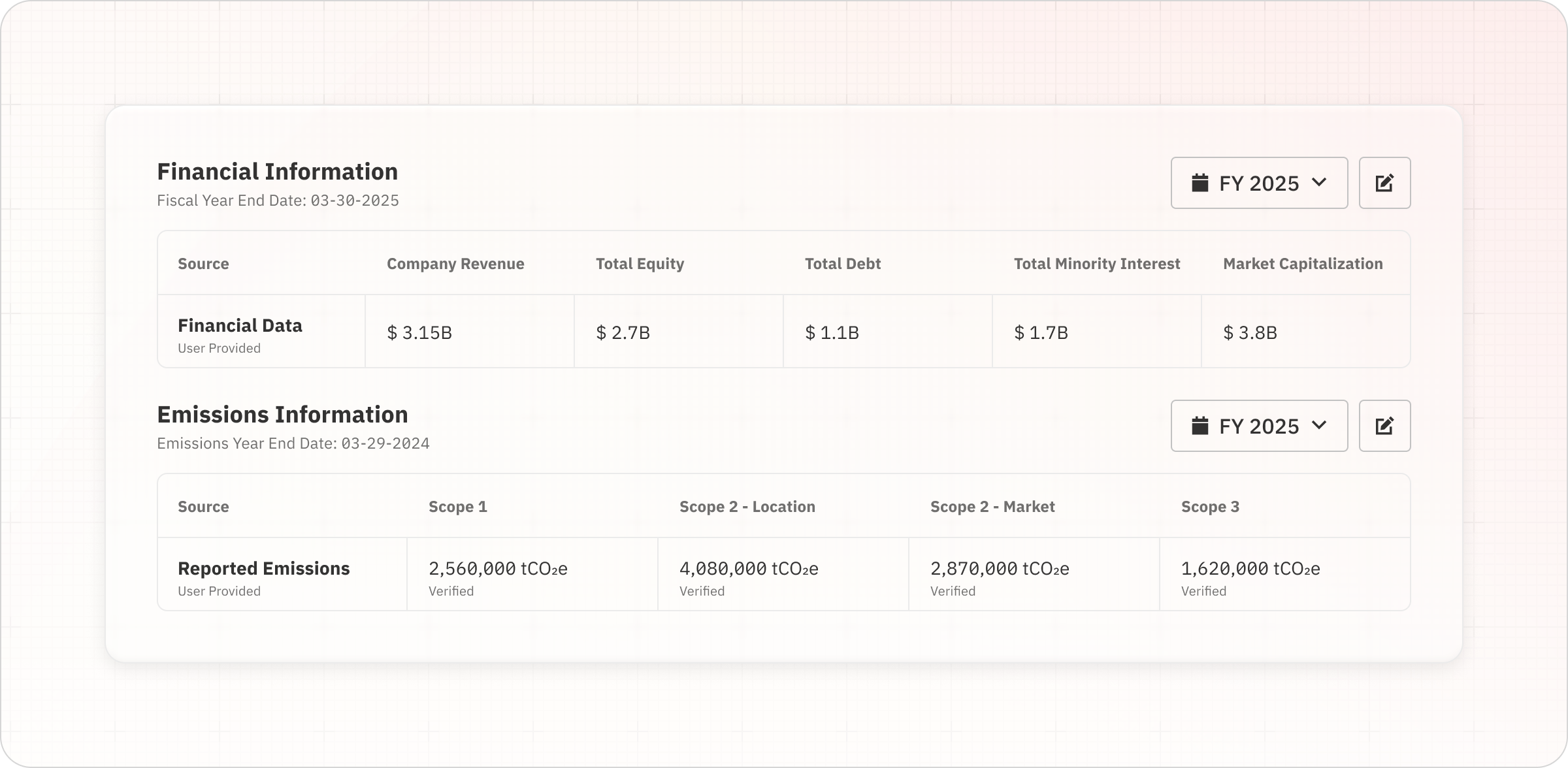California’s Climate-Related Financial Risk law (SB 261) is new to many companies and can be intimidating. Many organizations are wondering how to approach the process. One of the first decisions they must make is whether to seek outside help in crafting their climate-related financial risk report or keep the work in-house.?
In this article, we’ll discuss the pros and cons of each approach and help you answer the question of who should own the SB 261 disclosure process.?
The Pros and Cons of In-House Ownership
When you produce your SB 261 report internally, you own the entire process, from identifying material risks to assessing your governance structure, gathering data, and writing the narrative report. There are upsides and downsides to this approach. Below, we cover some of the pros and cons of keeping your disclosure in-house.?
Pros
1. Control Over Narrative
Keeping your reporting in-house ensures you have full oversight over how your climate-related financial risks are assessed and disclosed. This kind of control can be useful for managing the potential impacts of your disclosure on your company’s reputation and investor confidence. Internal ownership of the process can help ensure that the framing and assumptions in your SB 261 report align with the company’s strategic priorities and brand positioning.?
2. Integration With Existing Teams
One of the advantages of producing your disclosure in-house is that it can be easier to integrate other teams into the process. Cross-functional collaboration is essential for SB 261 reporting: Often, legal and compliance staff lead the project and must coordinate with partners in finance, sustainability, and other departments. It can be easier for a staff member to communicate and gather data from other teams than it is for an external consultant, who may have fewer relationships and less institutional knowledge. If you do look to outside advisors to assist with your report drafting, you’ll want to still pay close attention to ensuring you have the right eyes on the process internally to help guide your ultimate disclosures.
Cons
1. This is a New Process for Many
Compliance with SB 261 requires a foundational understanding of climate, financial risk, and regulatory compliance. These are specialized fields, and for many teams, it is a new discipline. To produce your disclosure, you’ll need a solid grasp on physical and transition risk assessment, emissions reporting, and the global frameworks that underpin SB 261, including TCFD and ISSB. You’ll also need to know how to align sustainability reporting with your financial planning and disclosures (e.g., SEC filings); this technical knowledge often exists outside of the organization and can be a real help to teams just getting started with their first climate risk reports.?
2. Drain on Time and Resources
The most obvious downside to in-house reporting is that it takes considerable staff time and resources. Many organizations don’t have dedicated staff overseeing climate initiatives and reporting, and SB 261 compliance can drain resources. Even companies with sustainability teams may find it challenging to manage the data and analysis necessary to meet SB 261 requirements. These teams are often overburdened and need to focus on implementing climate strategies, not meeting disclosure requirements.
When Seeking External Help Makes Sense
Some sustainability reporting can be performed in-house with relatively few complications. However, there are several factors that should prompt you to consider outsourcing your disclosure. These include:?
1. Resource Constraints
If your staff is already stretched thin, you should strongly consider outsourcing your disclosure. Producing a comprehensive, compliant report is time- and labor-intensive. Your employees must have the capacity to reliably conduct research, analyze data, write the narrative, and coordinate with functions like sustainability, finance, legal, operations, and risk management. Adding external support to do the heavy lifting will free up your internal teams to stay focused on their core responsibilities.??
2. Regulatory Complexity
The global climate disclosure landscape is rapidly evolving. SB 261 is just one of a wave of laws and frameworks requiring businesses to share information about their sustainability risks and impacts. Many organizations subject to SB 261 will also need to report under California’s SB 253, and the law overlaps with regulations like Europe’s CSRD and US SEC proposals. Navigating these intersections can be complex. External partners who bring a background in climate disclosure (as well as foundational frameworks like TCFD and ISSB) can help companies avoid errors and inconsistencies that drive up costs and create legal and reputational exposure.?
3. First-Time Disclosures?
External support is especially valuable for organizations that have never produced a climate-related financial risk disclosure. SB 261 disclosures differ from many other public sustainability statements. You’ll need to assess material climate risks specific to your company and geography, which requires emissions data, scenario modeling, and an analysis of financial impacts. Partnering with outside experts for your first disclosure can shrink the learning curve and help you build your in-house capabilities for future reporting.?
Keep in Mind: Even if you bring in external experts to facilitate your SB 261 disclosure, the report is ultimately your company’s responsibility. Internal teams will still need to contribute to the process, provide inputs, and carefully review the final report to ensure accuracy and alignment with corporate governance, legal obligations, and existing communications. Outsourcing does not mean outsourcing accountability.

What to Look for in an SB 261 Compliance Partner
If you’ve made the decision to outsource your SB 261 disclosure, you’ll likely need to sort through offerings from dozens of different consultants. There are a few key factors to keep in mind as you select an SB 261 compliance partner. Features to look for include:?
TCFD Expertise
California’s climate disclosure law was built on the framework developed by the Task Force on Climate-Related Financial Risk (TCFD). Your SB 261 partner should have expertise applying the framework’s four pillars and eleven elements to ensure that your climate-related financial risk disclosure aligns with TCFD. They should also understand how SB 261 and TCFD intersect with ISSB standards and other common disclosure frameworks, including SB 253, CDP, and CSRD.?
Sector-Specific Experience
A one-size-fits-all approach does not work for SB 261 compliance. Your disclosure should be customized, taking into account your company’s distinct governance structure, industry, and geography. At a minimum, your SB 261 consultant should have specialized experience in climate-related financial risk disclosure. It’s beneficial if they also bring knowledge of the specific climate hazards and pressures in your industry.?
Collaborative Workflows
Ideally, your SB 261 partner will provide visibility into the disclosure process, and allow you to retain control over your data and narrative. Look for a firm that offers collaborative workflows, including helping coordinate with different stakeholders and enabling you to revise and adapt your draft report.?
Legal, Risk, and Sustainability Integration
One area where an outside expert can be particularly helpful is in making sure your SB 261 disclosure integrates with your company’s other legal, risk management, and sustainability efforts and communications. Inconsistency with public-facing statements (e.g., SEC filings and PR materials) can erode your credibility, so it’s important to get this right. Establishing consistency from the start will streamline future reporting under other frameworks such as SB 253, CSRD, and CDP.

How 麻豆原创 Can Support SB 261 Compliance
For companies that decide to outsource their reporting, 麻豆原创 offers a technology-backed consulting service. A team of climate disclosure experts will manage the entire process for you, delivering a custom-built, submission-ready SB 261 disclosure.?
The service combines hands-on expert guidance with a powerful carbon accounting platform for reliable, audit-ready data and TCFD-aligned disclosures. 麻豆原创 does all the heavy lifting: After getting basic information about your company, our compliance experts conduct a portfolio assessment, then gather information about your governance, strategy, risk management, metrics, targets, and mitigation strategies.?
Next, they write a draft for you to review before delivering the final, audit-ready SB 261 disclosure. They will check to make sure your report aligns with your other disclosures, strategies, and planning. The service integrates seamlessly with 麻豆原创’s SB 253 reporting tool to ensure consistent data and narratives across disclosures.
This combination of technical tools and hands-on support from climate risk disclosure experts eases the burden of reporting while giving you confidence that your data and narratives are reliable, consistent, and compliant.?





